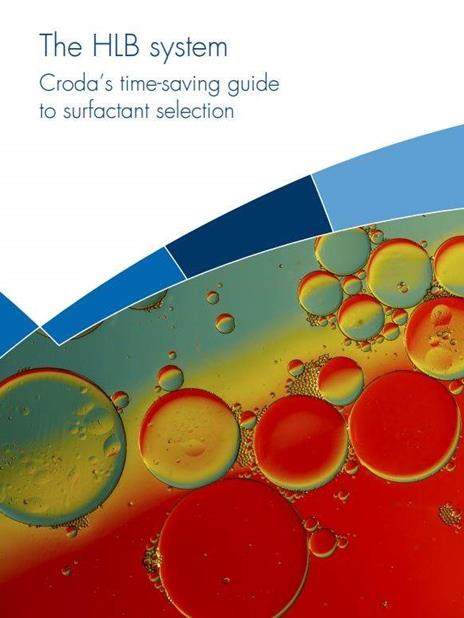
Hydrophile lipophile balance
Hydrophile Lipophile Balance (HLB) is a way of measuring a substances solubility within water or oil. The HLB system was created as a tool to make it easier to use nonionic surfactants. The HLB system enables you to assign a HLB value to a surfactant and a HLB requirement to the application for that surfactant. Properly matching these values helps develop your formulations.

The three step surfactant selection method
Step 1: Determine the HLB requirement of the oil.Step 2: Determine the most effective surfactant chemistry.
Step 3: Determine surfactant concentration required to achieve desired stability and or rheology.
Download our surfactant selection guide to learn more about how HLB could be important for you to understand and to apply to your formulations.
HLB surfactant selection guide

Step 1: HLB requirement
The required HLB for an oil is the HLB value of the surfactant that will provide the lowest interfacial tension between your oil phase and your water phase. When you are at the lowest interfacial tension between these two phases, you will need the lowest amount of surfactant to achieve a stable emulsion. In simple terms, lowest interfacial tension equals lowest amount of emulsifier.
Choosing the surfactant with the lowest interfacial tension allows for:
- efficiency;
- lowering of the mechanical energy required to form the emulsion;
- minimising the work required of the surfactants at the interface to keep the dispersed droplets from coalescing; and
- minimising surfactant concentration.
Step 2: Surfactant chemistry
To choose your surfactant, there are two important factors to consider. The first is chemical class. There are several chemical types of surfactants available, and each will perform differently in formulation. The four main classes of surfactants, categorized by the charge on the hydrophilic head of the molecule are:
- anionic (negative charge);
- cationic (positive charge);
- amphoteric (charge dependant on the pH); and
- non-ionic (no charge).
Step 3: Surfactant concentration
Once you have chosen the chemical class, you need to choose a surfactant or surfactant blend with the correct solubility for your application. Surfactant solubility can affect product performance, so here are some general rules to keep in mind:
- high solubility – cleansing and detergency;
- medium solubility – spreading and dispersion;
- low solubility – invert (W/O) emulsions, coupling immiscible oils; and
- blend – O/W emulsions.